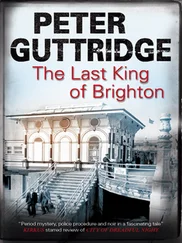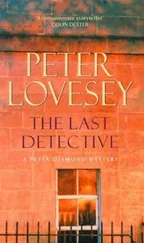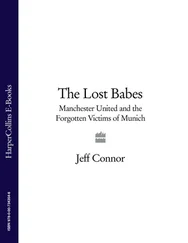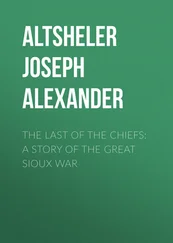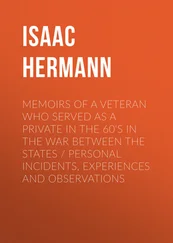1 ...6 7 8 10 11 12 ...17 Some veterans had gone to the war straight from school without ever being trained for any sort of job other than fighting, and had no experience of the workplace. Others had spent so long in the services that through lack of practice they had almost forgotten the skills they once had, or had missed out on the technical advances that had been made in their absence. Employers were reluctant to take such men on, and this bred even more resentment among the veterans towards those who had stayed behind and were preferred as employees. It was reckoned that around one million men returned from the war to find they had no job. The government provided those who had served in the ranks with unemployment benefit, but former officers were supposed to have sufficient private means to keep them going and were left to fend for themselves. While still in France awaiting demob, Guy Chapman’s battalion was visited by representatives of the commission for the employment of ex-servicemen. Chapman was told that at twenty-eight he was ‘far too old’ and that consequently nothing could be done for him. A fellow officer was told that ‘military distinction was a quite useless recommendation for civil life’. The writer Gilbert Frankau, who had joined up immediately at the outbreak of war and served as an officer at Loos, Ypres and on the Somme, spoke for many in his poem ‘Only an Officer’:
Only an officer! Only a chap
Who carried on till the final scrap,
Only a fellow who didn’t shirk –
Homeless, penniless, out of work,
Asking only a start in life,
A job that will keep himself and his wife,
‘And thank the Lord that we haven’t a kid.’
Thus men pay for the deeds men did!
Unemployment among all classes would remain a major problem in the immediate post-war period, and veterans sporting medals reduced to playing barrel-organs in the streets or peddling matches, shoelaces and other small items became a common and shaming sight. A poignant postcard of the period, on which a poem about the sacrifices made in France and the broken promises about employment back home was printed, came with the following message:
PLEASE READ THIS. Can you help this Ex-service Man by buying this Poetry. PRICE TWOPENCE. So please patronise an Ex-Soldier, Out of Work. NO PENSION. NO DOLE. I am a Genuine Discharged Soldier NOT AN IMPOSTER. I am compelled to sell these to keep myself, wife and children.
Sold entirely by unemployed Ex-service men.
Even those in employment were often dissatisfied with wages and working conditions. In Glasgow in January 1919 an agreement negotiated on behalf of engineers and shipbuilders between the trade unions and employers for a forty-seven-hour working week was rejected by the Clyde Workers’ Committee on the grounds that a forty-hour week was preferable because more people – in particular discharged servicemen – would be needed for jobs. Accustomed to the ‘red’ reputation of the Clyde, the employers and government did not take too much notice of the strike called by the CWC at the end of January. After four days, however, 40,000 men had laid down their tools and were joined not only by Glasgow’s electrical workers but by 36,000 Scottish miners. Ex-servicemen were used as pickets, naturally arousing public sympathy, and on 29 January some 60,000 people attended a demonstration in George Square, Glasgow, while a delegation was granted an audience with the Lord Provost. A vain attempt to disperse the crowd by mounted police led to a pitched battle not only in the square but in other parts of the city, and many were injured. Fearful that Scottish troops might side with the strikers, the government sent massed English troops to Glasgow, some of them in tanks. Peace was restored and on 10 February the strike was called off, its aim unrealised. Politicians nevertheless feared that without the war effort to hold the nation together, discontent and dissension would spread throughout society.
In the immediate aftermath of war, the interests and aims of workers often coincided with those of former servicemen. Indeed, the earliest associations of veterans had a strong political dimension, and the British Legion – associated latterly with garden fêtes and genteel volunteers selling poppies – grew out of surprisingly radical beginnings. The Legion itself did not come into existence until 1921, but a number of other veterans’ associations were founded while the war was still being fought. There had long been charitable organisations set up on behalf of British war veterans, ensuring that old soldiers did not simply fade away in penury. The professional soldiers who fought in the First World War, however, were outnumbered by civilians who, in the language of the times, had answered the nation’s call, either by volunteering or because they had been conscripted. In return, it seemed only right that they should be entitled to benefits provided by the state rather than having to rely upon handouts from charities. Veterans who had left the service began organising themselves into associations that would lobby for pensions and for disability and unemployment allowances.
The earliest grouping, formed in September 1916, was the National Association of Discharged Sailors and Soldiers, which had strong links to both the Labour and Trades Union movements. The similarly named National Federation of Discharged and Demobilised Sailors and Soldiers, formed in April 1917, was sponsored by a Liberal MP and held its inaugural meeting at the National Liberal Club. It was open only to those who had served in, or risen from, the ranks, presumably because the Federation felt, as the government did, that former commissioned officers could look after themselves. The Comrades of the Great War was proposed in August 1917 by Lieutenant Colonel Sir John Norton-Griffiths, a Conservative MP (supported by Lord Derby, the then Secretary of State for War), with the express intention of providing an organisation without what he considered the radical, even revolutionary, affiliations of the other associations. The most radical of them all was the short-lived National Union of Ex-Servicemen (NUX). This was founded in 1918 by John Beckett, a former soldier and a member of the International Labour Party who believed that ex-servicemen’s associations could flourish only if they maintained links with other workers’ organisations whose aims were deemed more or less identical. Workers’ organisations often agreed, as may be judged by the pronouncements of Wal Hannington, a trade union official and founder member of the Communist Party of Great Britain. He regarded the unemployed former servicemen ‘who had come from the bloody battlefields only to be cast on to the industrial scrap-heap of capitalism’ as key components in the political struggles of the post-war period. There was a great deal of unseemly infighting among the disparate ex-servicemen’s groups, but by the end of the war they had become a force to be reckoned with.
By the summer of 1919, the Federation was rumoured to have two million members and was described in the House of Commons as ‘a huge shapeless, and menacing mass, on the verge of collapse into anarchy’. Evidence of this had been seen a few days earlier when the Federation organised a demonstration in Hyde Park to protest about the lack of employment opportunities for discharged and disabled servicemen. Having listened to speeches in the Park, and passed a resolution that ‘unemployed ex-servicemen shall immediately be found work at trade union rate of wages’ or, failing that, an increased unemployment benefit of £1 8 s (rising to £2 for those with children), the 10,000 or so protesters declared their intention of marching on Buckingham Palace and the Houses of Parliament. Prevented by a police cordon at the top of Constitution Hill from approaching the Palace by the most direct route, the demonstrators took another, where their way was once again barred. In Victoria Street the road was being dug up, and this provided the protesters with wood blocks and chunks of concrete, which they hurled at the police, and scaffolding poles, which they used to trip up the horses of the mounted division. Having abandoned their attempt to storm the Palace, they headed for the House of Commons, where they ‘swept away a line of mounted policemen’ in Parliament Square and ‘surged forward alongside St Margaret’s Church, throwing missiles at the flying line of police’. Mounted police reinforcements that had been held in reserve then charged the crowd, ‘drew their truncheons and used them freely’. Numerous people on both sides ended up in hospital. It took almost an hour to disperse the rioters, who departed only after they were addressed by James Hogge, the Liberal whip who had formerly been the Federation’s president and was still lobbying on their behalf in Parliament.
Читать дальше


